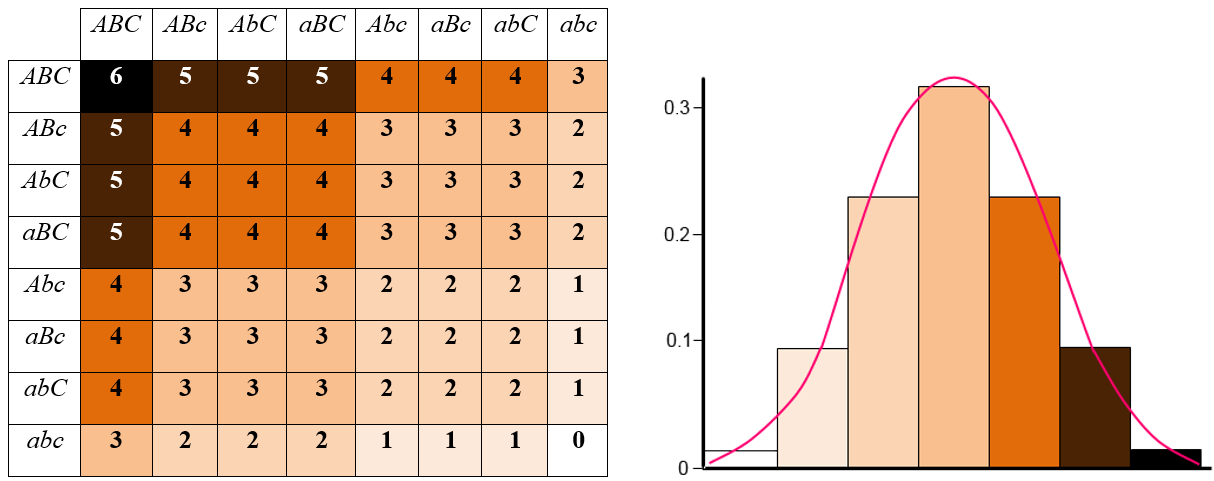POLYGENIC INHERITANCE
Polygenic Traits: Polygenic traits are those that are controlled by three or more genes, and they often result in a range of continuous variation rather than distinct alternatives. These traits, such as human height and skin color, are spread across a gradient of values.
Additive Effects of Alleles: In the case of polygenic traits, each gene contributes to the trait’s phenotype in an additive manner. This means that the more dominant alleles an individual has, the darker the trait (e.g., skin color), and the more recessive alleles an individual has, the lighter the trait.
Human Skin Color Example: The passage uses human skin color as an example of polygenic inheritance. It describes a hypothetical scenario where three genes, A, B, and C, control skin color. The dominant forms (A, B, C) contribute to darker skin color, while the recessive forms (a, b, c) lead to lighter skin color. A genotype with all dominant alleles (AABBCC) would result in the darkest skin color, while a genotype with all recessive alleles (aabbcc) would lead to the lightest skin color. Genotypes with various combinations of dominant and recessive alleles would produce intermediate skin colors.
Environmental Influence: The passage notes that polygenic traits also take into account the influence of the environment. Environmental factors can interact with an individual’s genetic makeup to further affect the trait’s expression. For example, sun exposure can influence the actual skin color of a person.


